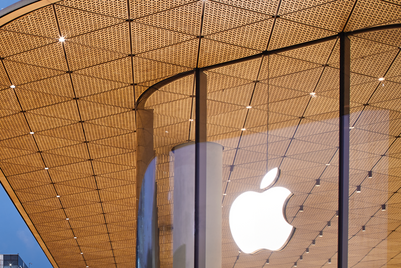Apple’s net sales fell 0.7%, or US$648 million, to US$89.5 billion in its fiscal fourth quarter, despite stronger than expected growth in iPhones and services sales, including subscriptions and advertising.
Sales of iPhones, by far Apple’s largest product category representing roughly half (49%) of total sales, grew 3% year over year to $43.8 billion in the quarter ended September 30.
In the same quarter in 2022, sales of the iPhone 14 Pro was impacted for several weeks by a Covid-19 outbreak at an iPhone plant in China, which
caused delays in shipments.
The results include only a few weeks of sales of Apple’s newest iPhone 15 models.
While the iPhone results exceeded analyst expectations, an investor remarked that sales are “still relatively softer on where I thought it would be at this point in the cycle,” during the company’s investor call on Thursday evening.
Mac sales plunged by 34% to $7.6 billion in the quarter, which Apple CEO Tim Cook blamed on challenging market conditions as well as difficult YOY comparisons as a consequence of supply disruptions last year.
In the next quarter, Apple said it anticipates a “significant acceleration” in Mac sales.
“I wouldn't look at the negative 34% as representative of the underlying business performance,” Cook told investors.
Sales across Apple’s other product categories also fell in the quarter. IPad sales slumped 10% to $6.4 billion, while wearables, home and accessories—its second-largest product category including Apple Watch products—fell by 3.4% to $9.3 billion. These categories are expected to “decelerate significantly” in fiscal Q1, Apple chief financial officer Luca Maestri said.
Apple expects revenue in the current quarter to be “similar” to last year, Maestri said.
While product sales in the quarter fell 5.3% to $67.2 billion, Apple’s services revenue accelerated to double-digit growth at 16.3%, drawing in $22.3 billion in sales.
Services revenue includes advertising, subscription fees and revenue generated from app developers.
Cook said revenue derived from App Store advertising, Apple Care, iCloud, payments services and video hit “all-time records” during the quarter, while it was Apple Music’s best Q4.
Services has been Apple’s fastest-growing division for some time and accounted for 25% of net sales in the quarter, up from 21% in the same period in 2022. Apple shared that it surpassed 1 billion paid subscribers across its services
last quarter; Maestri simply added on Thursday that number is “well over one billion.”
Despite the bright spots, Apple’s performance in China—a key market for the tech company—has spooked investors.
Revenue from the Greater China region, which was responsible for 17% of Apple’s revenue in Q4, fell 2.5% to $15.1 billion in the quarter—nearly $2 billion below analyst expectations.
While Apple blamed foreign currency headwinds for its performance, it is also facing growing competitive pressures from Chinese manufacturers like Huawei as well as geopolitical tensions that were
allegedly behind an iPhone ban by some government officials—though China
denied any official ban.
Apple’s revenue in Japan slipped 3.4% to $5.5 billion, while the rest of Asia-Pacific fell 0.7% to $6.3 billion, though Apple said it hit an all-time revenue record in India.
Executives said the company also achieved Q4 records in Brazil, Canada, France, Indonesia, Mexico, the Philippines, Saudi Arabia, Turkey, the UAE and Vietnam.
Revenue from the Americas, its largest region, grew 0.8% to $40.1 billion. Europe fell by 1.5% to $22.5 billion.
Profit lifted 11% to $23 billion.
Apple’s stock dropped more than 3% in after-hours trading.
(This article first appeared on CampaignLive.com)




.jpg&h=334&w=500&q=100&v=20250320&c=1)
.jpg&h=334&w=500&q=100&v=20250320&c=1)

.jpg&h=334&w=500&q=100&v=20250320&c=1)


.jpg&h=334&w=500&q=100&v=20250320&c=1)


.jpg&h=334&w=500&q=100&v=20250320&c=1)



.jpg&h=268&w=401&q=100&v=20250320&c=1)

.jpg&h=268&w=401&q=100&v=20250320&c=1)


